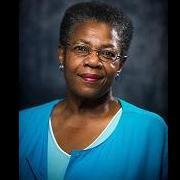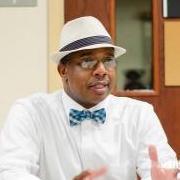-
Posts
2,415 -
Joined
-
Last visited
-
Days Won
91
richardmurray's Achievements
Single Status Update
See all updates by richardmurray
-
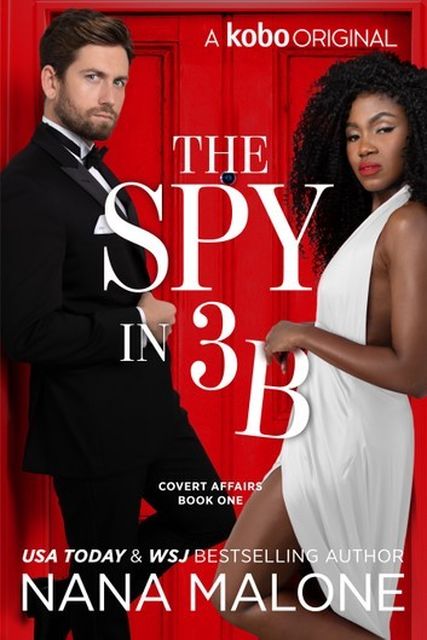
Nana Malone is the bestselling author of sexy, feel-good, action-packed romance novels.
The Spy in 3B is the first book in the Covert Affairs Duet.
What are you reading now?I’m reading a #brownnipplechallenge book called The Road to Rose Bend by Naima Simone. It’s a small town romance, which I don’t normally love — but it’s really good. I really like Naima’s writing; she’s such a seasoned writer and her writing has such an effortless flow to it. [More on the #brownnipplechallenge at the end of this interview – Ed.]
I partnered with Lyric Audiobooks to do Audio in Color where we created a grant program to help writers of color do their first audiobook. And so I’m reading through submissions for that to see what’s going to work well in audio.
Have you found that turning your own books into audiobooks has influenced how you write?
I realized a while ago that I’m basically writing television. My editors are always asking for more emotion, more description, more on the page. But my strong suit has always been banter, as if the characters are on screen. So I’m always ready for audio.
My books that haven’t worked in audio have been the ones where I tried to do more exposition and wrote less naturally to my strengths. I think it’s important for a writer to evolve, but you’ve also got to understand yourself better so you can sink into who you are. I’ve tried to write straight rom-coms, but I just always need a bad guy — someone has to get their comeuppance. So that rom-com with an action twist is really where I like to play, and that’s The Spy in 3B.
It’s almost like a professional athlete who has to decide early on what their position is and play that, and not worry about being bad at playing the other positions.
I was a track and field athlete, and there’s this thing where you have your strength but you ignore it because it doesn’t fit what your idea of your strengths are. For years I was trying to be a short-distance sprinter, and I had a track coach who wanted me to run the half-mile. But I fought it because it wasn’t my own idea of me — and then he made me run it, and I got it. It tapped into a strength I had but didn’t acknowledge.
Series writers are told to “write the same — but different.” And that was me writing the Royals books for three years. I had to figure out what to do next, so it was Royal bodyguards, which kept the same tone. Then Royal cousins, and on and on, all in the world I love which is heists and capers, action-adventure.
“I don’t go to bed until the words are done. If it’s six scenes for the day, then that’s what I need to do, and if I’m smart I’ll get a couple done early.”
Did the pandemic change how you write?
Not so much the pandemic, but when I’m writing I can’t be reading anything at the same time. I’ll be working on a “best friends to lovers” plot, and suddenly I’m finding the guy is turning into a total jerk. It’s because of what I’ve been reading. So when I’m done with edits I’ll gorge on three books before I dive back into it. I have a Christina Lauren on my list that I really want to get to. Sierra Simone has a series that went Priest and Sinner, and I can’t wait for Saint. She’s a friend so I know I’ve got an advance copy for that coming — and that’s the last thing I’ll inhale before I go back into my writing cave for the next Covert Affairs book The Assassin in 3F.
You’re such a busy writer — how did the pandemic impact your focus? I’ve heard from other writers that it was a strange kind of freedom to have no social interactions to turn down when writing needed to get done.
In my case, I went into the pandemic with a heavy schedule and I don’t let myself miss a deadline. I had to find a way.
I used to wake up at 5:30 every morning when my daughter was very young just to get some words in before going on to my full-time job, and sometimes that would mean feeding a baby and typing one-handed. I’ve switched to dictation due to a shoulder injury, so then it became dictation and feeding. I learned I can work in 15-minute chunks and get 500 words out of each chunk. And by building up these 15-minute chunks through the day, I could get about 3000 words, which for me is about a chapter and a half.
So when the pandemic hit, I took that focus and adapted it. When the weather was warm I’d just walk in the backyard and dictate and knock out chapters. But then with remote school, and moving my daughter from her room into the main space of the house, my daughter’s French lessons and Spanish lessons started becoming my French and Spanish lessons, so we had to switch it up again. I became nocturnal and worked after my daughter and husband had gone to bed. I don’t go to bed until the words are done. If it’s six scenes for the day, then that’s what I need to do, and if I’m smart I’ll get a couple done early. I’ve learned my brain is better in the morning.
But you’ve also got to give yourself grace. I moved one deadline and I still think about it. [laughs]
My daughter’s back at school a couple days a week, so I’m adjusting again.
Many authors are driven to write because of the stories they want to read. But you went a step further into how those stories are presented to readers before they’re read — by posing as a model on covers for other writers. How did that come about?
I’ve been published since 2010 and in the beginning, let’s just say I was really naive, and I let my publisher define who I was as a writer. Like with my first book, which was an adoption story about a Black woman who raises her best friend’s kid who’s white, and they marketed me as a “multicultural author” and I figured at the time, okay I guess that’s what I am.
I knew I wanted to write books about brown women just living their happy Black lives — and it wasn’t a huge deal that they were deserving of happily ever afters. I took that on as a mission. Because when I started there was a lot of chick-lit with not a speck of brown to be seen; even in my favourite chick-lit books, there aren’t even secondary characters of colour.
So I remember they just put the hand of this woman on the book about the adoption. And I didn’t think about why they would have done that. Only when I started self-publishing and taking responsibility for my own covers, that’s when I understood the pickings were slim.
“It wasn’t enough for me just to depict a Black woman on the covers — I wanted to show a dark-skinned Black woman.”
At the same time, I was pursuing traditional publishing deals and hearing from agents and publishers that people aren’t really looking for stories with Black women in them. But I was stubborn about my mission and staying authentic to myself. So I started playing with object covers. I also realized that if I’m writing an interracial story, I can put a white guy on the cover, and I can leave it until page 100 that the reader gets a description of a brown nipple.
But last summer, with the racial uprising and sea change that happened, Nina, my publicist, told me I need to go back to my older books and put brown-skinned women on the covers. And I wanted to, because it’s important for little girls like my daughter to see women who look like her who are deserving as anyone of love without complication. But I needed a push. I mean, I knew the reality of the available stock photos.
It wasn’t enough for me just to depict a Black woman on the covers — I wanted to show a dark-skinned Black woman. Look, in Ghana where my family is from I’m a medium brown. But in the US, I’m considered dark-skinned. At the same time, in the stock photos there are some mixed-race girls available, but I knew my books and I knew my heroines were dark-skinned. But also, these are books about royalty, so she’s also going to need to be in a ball gown, jewels, a crown. And then to add a male model to that mix — I couldn’t find anything.
But I knew a photographer whose work I’d bought for other covers, Wander Aguiar, and for 10 years he’d been saying, “You’re beautiful. I want to shoot you.” And I didn’t know what that even meant as a writer — I was content to just write my books. But I was in my Year of Yes, and thanks to Shonda Rhimes this was just another crazy thing I was going to do.
When one of the first photos went out through the Romancelandia newsletter, my phone blew up with messages from Black authors saying thank you, but also white authors who let me know they’d just bought the image for their own use!
I thought I was done. There was a problem and Wander and I made our contribution to solving it.
But then you started posing for covers for your own books. Can you tell me about how your thinking evolved here?
It was the same thing: I was looking for an image and I couldn’t find it, and it was extra-challenging because I was going to need a set of four for the series. So again, I was talking to my publicist and she said, “You’re going to have to do it yourself.”
It was terrifying. It’s one thing if someone doesn’t like the cover on someone else’s book. But to have my image on my books, with my readers judging them… But I did it and the books are selling. The audience had changed. Many more readers are ready to read stories about heroines who don’t look like them.
“I’m old! Modelling requires a significant amount of work to fit into things and look a certain way. I want to eat oreos!”
If suddenly there were many wonderful stock images featuring Black models you could use for your covers, would you hang up the ballgown?
I don’t think we’re going to see that plethora of options in my modelling lifetime. Though I really don’t feel a need to be on my own covers, I’m not opposed to it. When we were talking about cover ideas for The Spy in 3B, we were talking about maybe illustrated, but that’s not something on my other covers and I wanted readers to be able to make the connection, and so when the idea came up to have me on the cover, my first thought was, “Oh no, kale again?” [laughs]
I’m old! Modelling requires a significant amount of work to fit into things and look a certain way. I want to eat oreos!
Having done it before made it easier to say yes. My only concern was whether my face on another cover would be too much, but then I’m also learning The Subtle Art of Not Giving a F***.
You’re a champion for diversity in romance beyond the world of Nana Malone and covers featuring you — can you tell me about the #brownnipplechallenge?
With the #brownnipplechallenge I wanted to support other authors of colour — however they’re publishing, whether traditionally or through a self-publishing route — to put money in their pockets which will give them more access.
I come from a position of privilege, as the child of immigrants. I can get on a plane tomorrow and be in my grandfather’s village. Being Black in America and being able to trace that lineage, that’s a privilege. My father went to an Ivy League school, my mother’s a nurse, and that’s another layer of privilege. I do face racism as any other Black person does in this country, but it’s not the same burden that my brothers and sisters carry who are descended from enslaved people.
Last summer I wanted to take up a form of protest that feels safe for my family and feels authentic and sustainable for me. At the same time, people were sharing information about money they made in this business in #publishingpaidme and I was seeing the disparity between writers of colour, and my non-melanated friends — and I’m really happy for my friends and their success, but something had to change.
“I want people to know in these books there’s kissing, there’s happily-ever-after, there’s sexy-times. It’s not vegetables. It’s cake.”
So the #brownnipplechallenge is basically a book club. A non-performative one. I didn’t want to help anyone stock a “diverse bookshelf” of unread books. There’s this idea that reading books by these authors is like eating your vegetables. And I want people to know in these books there’s kissing, there’s happily-ever-after, there’s sexy-times. It’s not vegetables. It’s cake.
You will show up to these book club meetings having read the book, and we’re going to talk to the author, and it will make it more personal and real. It’ll be fun!
I’m lucky. I’ve had difficulty, but I made it. And there’s only a handful of us at this point. When people name Black romance authors, it’s always the same few: Beverly Jenkins, Brenda Jackson, Kennedy Ryan, Brittainy Cherry, Alyssa Cole, you know. But I know there are thousands who haven’t had the opportunities, so they haven’t earned the money, and they can’t run the ad campaigns to target readers. And when they do run campaigns, targeting readers of Black romance is hard because you’re back down to that small list — and if your books aren’t in the same genres as them, then you’re out of luck. The #brownnipplechallenge is me holding the door open, whether it’s just keeping my foot in the door, or squeezing in a whole hip, I want these authors to get in and have readers find them. ◼



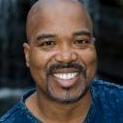
.thumb.jpg.afc88dfee9cd2927de0c440601caac13.jpg)
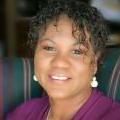

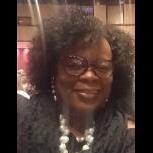
.thumb.jpg.ed52910791d00308abb8c218695bec88.jpg)
